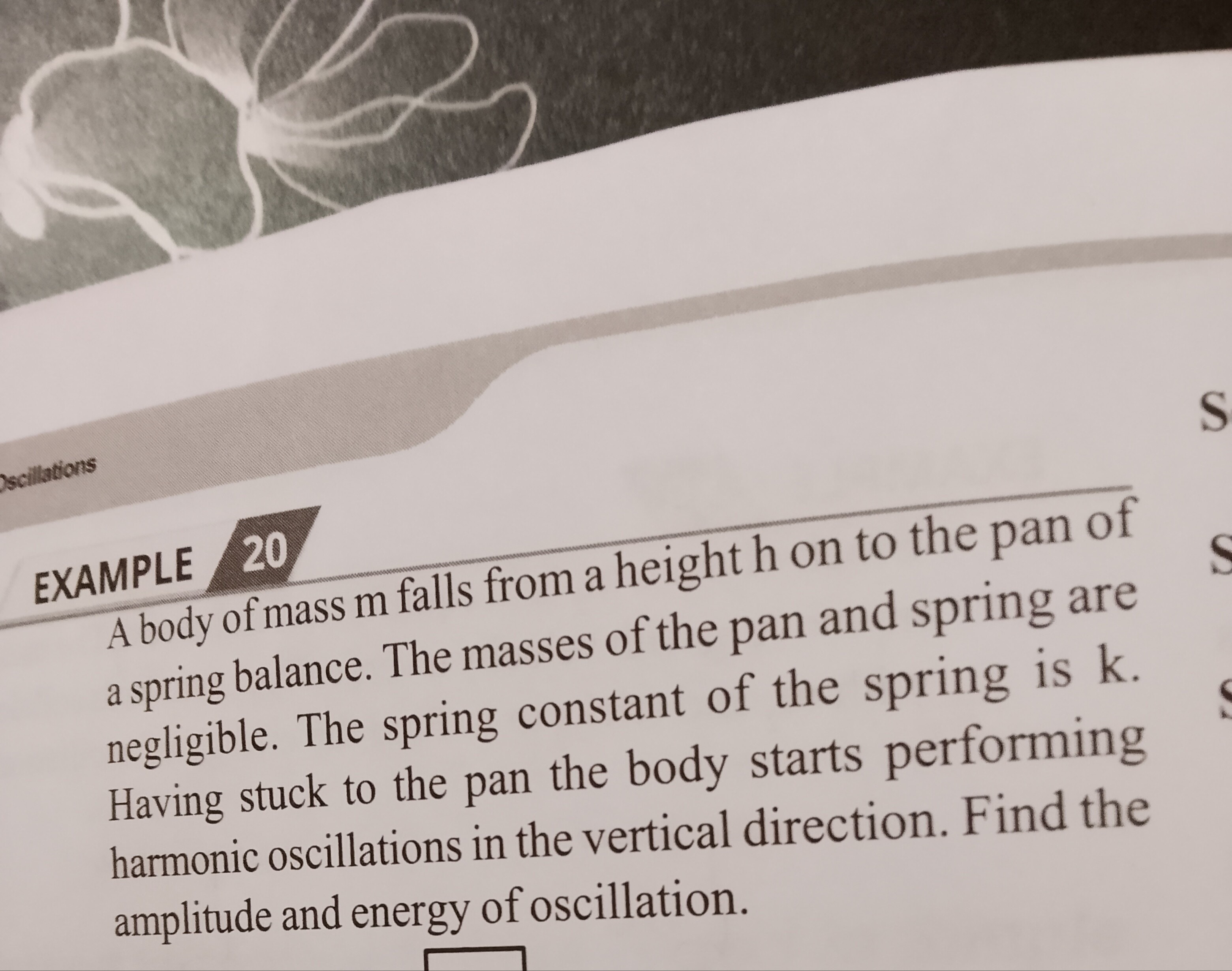Question
Question: A body of mass m falls from a height h on to the pan of a spring balance. The masses of the pan and ...
A body of mass m falls from a height h on to the pan of a spring balance. The masses of the pan and spring are negligible. The spring constant of the spring is k. Having stuck to the pan the body starts performing harmonic oscillations in the vertical direction. Find the amplitude and energy of oscillation.

Amplitude:
A=k2mgh+k2m2g2Energy of Oscillation:
E=mgh+2km2g2(or equivalently, E=21kA2)Solution
-
Let the natural (unstretched) length of the spring be at x=0 (measuring downward) so that the equilibrium position is at
xeq=kmg. -
When the mass hits the pan at x=0 its speed is
v0=2gh. -
Define the displacement from equilibrium as
y=x−xeq.At the moment of contact,
y0=0−kmg=−kmg. -
Writing energy relative to equilibrium (where the effective potential energy of a harmonic oscillator is 21ky2) the total energy (which remains constant) is
E=21mv02+21k(kmg)2=mgh+2km2g2. -
Since in SHM the total energy is also
E=21kA2,equate and solve for the amplitude A:
21kA2=mgh+2km2g2⟹A2=k2mgh+k2m2g2.Thus,
A=k2mgh+k2m2g2.
Summary:
- Explanation: Define y=x−kmg (with y=0 at equilibrium). Initial energy is the sum of kinetic energy (mgh) and spring energy 21k(kmg)2. Equate this to 21kA2 and solve for A.
- Answer: Amplitude A=k2mgh+k2m2g2 and energy E=mgh+2km2g2.
